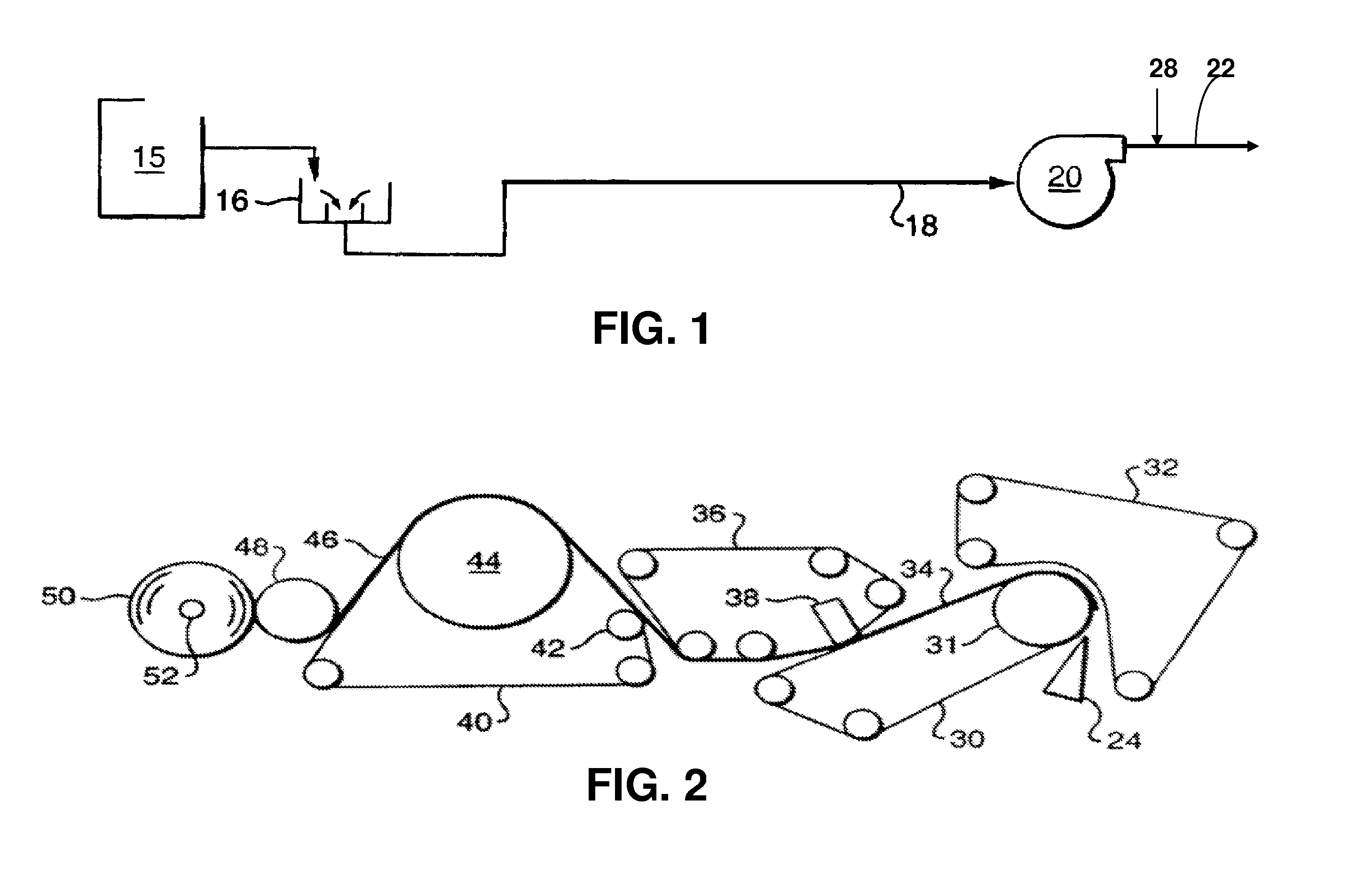Tissue Products Containing Microalgae Materials
a technology of tissue products and microalgae, which is applied in the field of pulp and paper industry, can solve the problems of increasing the cost of suitable wood fiber, the inability to meet the end product quality of users, and the inability to use recycled fibers in tissue products, etc., and achieves the effect of facilitating the retention of microalga
- Summary
- Abstract
- Description
- Claims
- Application Information
AI Technical Summary
Benefits of technology
Problems solved by technology
Method used
Image
Examples
example
[0063]The present disclosure may be better understood with reference to the following example. For Examples 1-3, a blend of conventional papermaking fibers and microalgae was prepared. Eucalyptus hardwood fibers commercially available from Fibria, Sao Paulo, Brazil were used. Spirulina algae was obtained as “Natural Spirulina Powder” commercially available from Earthwise Nutritionals, Calipatria, Calif. In Examples 1 to 3, a single ply, three-layered, uncreped throughdried tissue basesheet was made generally in accordance with U.S. Pat. No. 5,607,551 to Farrington et al. which is hereby incorporated by reference herein.
[0064]More specifically, 65 pounds (oven dry basis) of eucalyptus hardwood Kraft fiber was dispersed in a pulper for 25 minutes at a consistency of 3 percent before being transferred in equal parts to two machine chests and diluted to a consistency of 1 percent. Where used, algae was added as a dry powder in equal amounts to each machine chest. Algae was added over a ...
PUM
| Property | Measurement | Unit |
|---|---|---|
| Fraction | aaaaa | aaaaa |
| Fraction | aaaaa | aaaaa |
| Fraction | aaaaa | aaaaa |
Abstract
Description
Claims
Application Information
 Login to View More
Login to View More - R&D
- Intellectual Property
- Life Sciences
- Materials
- Tech Scout
- Unparalleled Data Quality
- Higher Quality Content
- 60% Fewer Hallucinations
Browse by: Latest US Patents, China's latest patents, Technical Efficacy Thesaurus, Application Domain, Technology Topic, Popular Technical Reports.
© 2025 PatSnap. All rights reserved.Legal|Privacy policy|Modern Slavery Act Transparency Statement|Sitemap|About US| Contact US: help@patsnap.com


